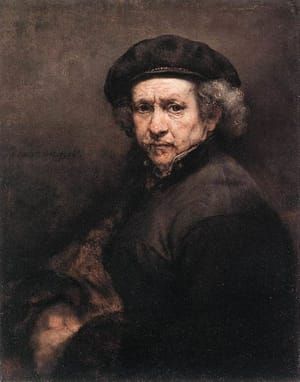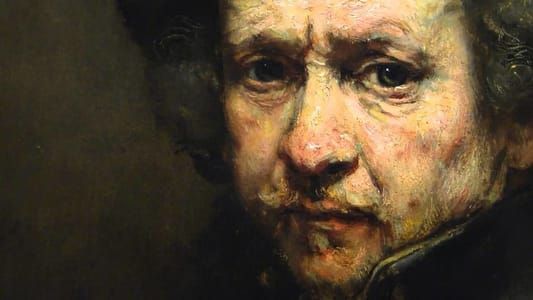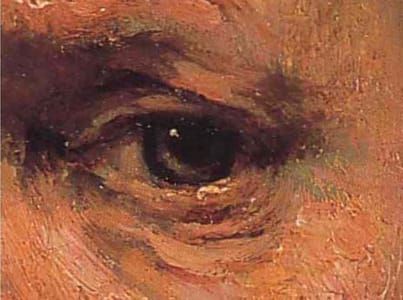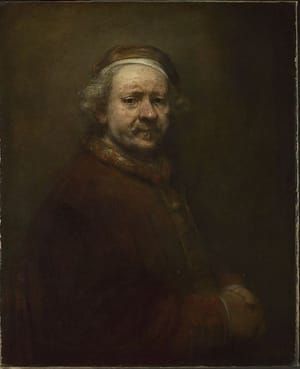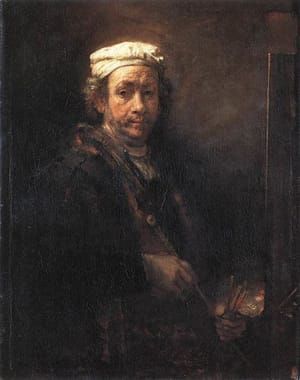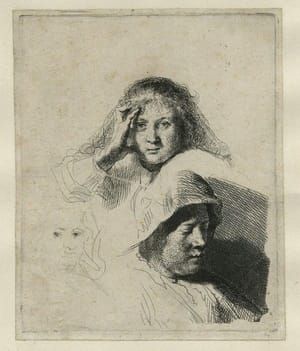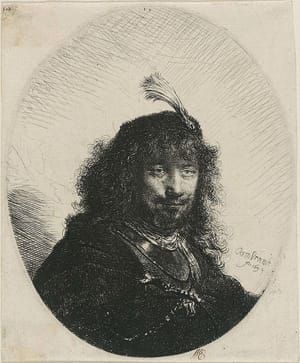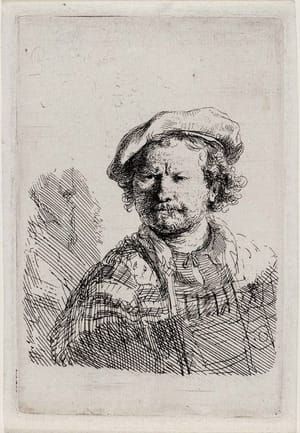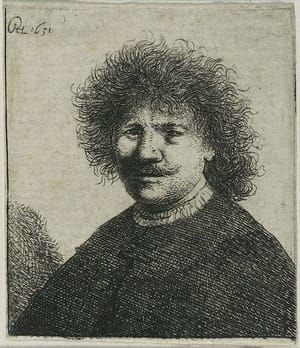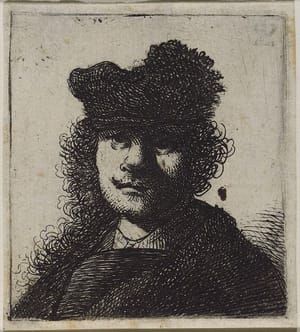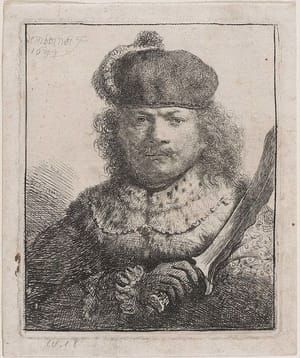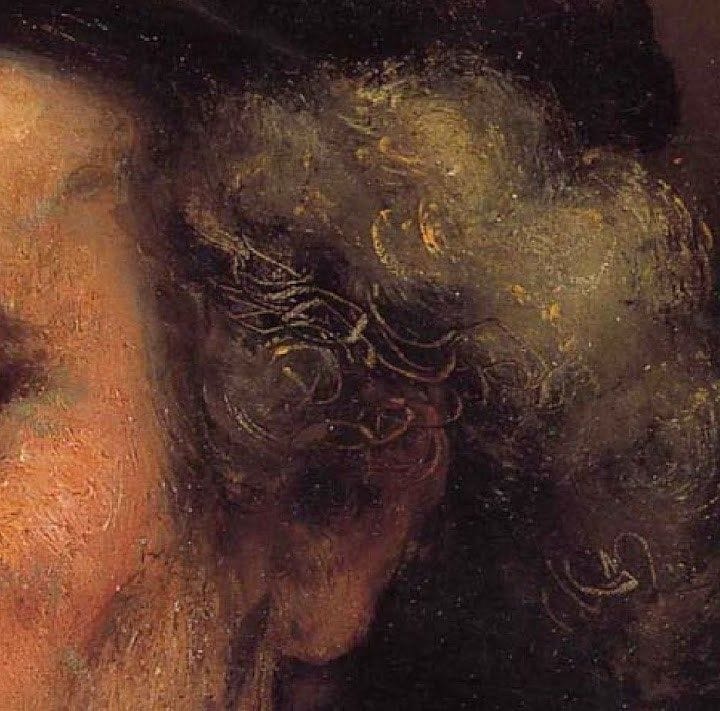

Self Portrait, 1659
Rembrandt van Rijn
Rembrandt painted, drew, and etched so many self portraits in his lifetime that changes in his appearance invite us to gauge his moods by comparing one image to another. Such a biographical reading is encouraged by the way in which the artist confronts the viewer directly. Rembrandt painted this self portrait in 1659, after he had suffered financial failure despite so many years of success. His spacious house on the Sint-Anthonisbreestraat and other possessions had been auctioned the previous year to satisfy his creditors. In this late work, the deep-set eyes that bore into those of the viewer seem to express inner strength and dignity. Interpreting paintings on the basis of an artist’s biography is nevertheless dangerous, particularly with an artist whose life has been romanticized to the extent that Rembrandt’s has.
The light that so effectively illuminates the head also accents Rembrandt’s left shoulder and, to a lesser extent, his broadly executed clasped hands. Rembrandt’s pose was inspired by Raphael’s famous portrait of Balthasar Castiglione, which had appeared in an auction in Amsterdam in 1639. Following Raphael’s prototype, Rembrandt used the pose, costume, and expression to present himself as a learned painter.
(https://www.nga.gov/Collection/art-object-page.79.html)
In his 63 years, Rembrandt Harmenszoon Van Rijn painted 88 self-portraits. He first painted himself in his twenties. They are masterful, proud, and just a bit cocky – the new kid on the block hanging out his shingle as a portrait painter. Caravaggio had already come and gone, alerting Rembrandt’s generation to the splendors and mysteries of raking light.
Rembrandt continued to use himself as a model throughout his life documenting his aging face through prosperous times and through the financial setback that beset him late in life. The self portraits that he left us are a great legacy to the world. They have much to teach the aspiring painter about how light and shadow activate an image, how it sculpts the planes of the head and sets up a dialogue between form and space. Rembrandt’s self portraits also teach us that content or meaning is not something that the painter needs to consciously program or add on. The inner state of the sitter and the outer forms are intimately involved in each other. Only the honest, attentive gaze will reveal it. (https://paintingowu.wordpress.com/2011/03/28/self-portraits/)
Uploaded on Oct 30, 2017 by Suzan Hamer
Rembrandt van Rijn
artistArthur
coming soon
